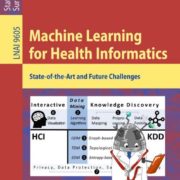Project Feature Cloud – Pre-Project Meeting and Workshop successful
From October, 21-22, 2018, the project partners of the EU RIA 826078 FeatureCloud project (EUR 4,646,000,00) met at the Technische Universität München, Campus Weihenstephan. Starting from January, 1, 2019 the project partners will work jointly for 60 months on awesome topics around federated machine learning and explainability. The project’s ground-breaking novel cloud-AI infrastructure will only exchange learned representations (the feature parameters theta θ, hence the name “feature cloud”) which are anonymous by default. This approach is privacy by design or to be more precise: privacy by architecture. The highly interdisciplinary consortium, ranging from AI and machine learning experts to medical professionals covers all aspects of the value chain: assessment of cyber risks, legal considerations and international policies, development of state-of-the-art federated machine learning technology coupled to blockchaining and encompasing social issues and AI-ethics.
















